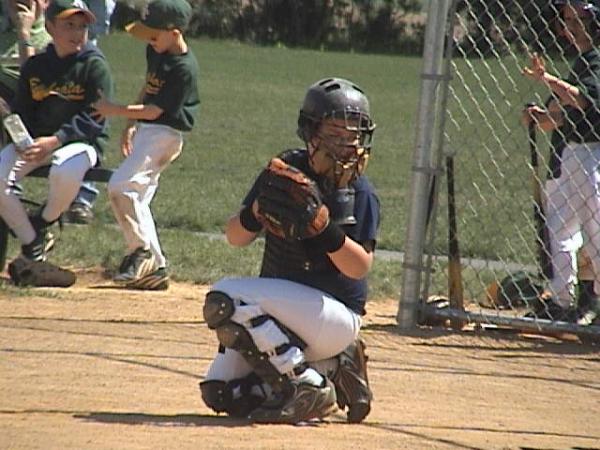 Of the almost 500,000 youth baseball injuries treated in hospitals, doctors' offices, clinics, ambulatory surgery centers and hospital emergency rooms each years, many are preventable or could be reduced in
severity by taking the following simple steps:
Of the almost 500,000 youth baseball injuries treated in hospitals, doctors' offices, clinics, ambulatory surgery centers and hospital emergency rooms each years, many are preventable or could be reduced in
severity by taking the following simple steps:
- Warm up and stretch. Research studies have shown that cold muscles are more prone to injury. Warm up with jumping jacks, stationary cycling or running or walking in place for 3 to 5 minutes. Then slowly and gently stretch, holding each stretch for 30 seconds.
- Proper equipment. Equipment should fit properly and be worn correctly.
- A batting helmet should be worn at the plate, when waiting a turn at bat, and when running bases.
- Face shields attached to batting helmets, required by some leagues,can help reduce the risk of a serious facial or eye injury.
- The glove or mitt appropriate for the position should be worn. Catchers should always use a catcher's mitt.
- Catchers should always wear a helmet, face mask, throat guard, long-model chest protector, protective supporter, and shin guards.
- Properly fitting molded, cleated baseball shoes should be worn at all times.
- Pitch and inning limits. Follow mandatory or recommended limits about the number of innings pitched or pitches thrown as specified by your baseball league, not by the number of teams played on.
- In the absence of limits set by the youth baseball organization (Little League is currently the only organizations with concrete guidelines for the number of pitches allowed), a reasonable approach is to count the number of pitches thrown and use 80 to 100 pitches as a maximum in a game, and 30 to 40 pitches in a practice.
- Safe playing field. The diamond should be inspected for holes, glass, and other debris. Always use safety-release bases to reduce the risk of injuries while sliding.
- Safety training. Coaches should be knowledgeable about first aid and be able to treat minor injuries, such as facial cuts, bruises, or minor tendinitis, strains, or sprains.
- Emergency preparedness. Be prepared for emergency situations and have a plan to reach medical personnel to treat injuries such as sudden cardiac arrest, concussions, dislocations, elbow contusions, wrist or finger sprains, and fractures.
Source: American Academy of Orthopaedic Surgeons
Revised March 17, 2011








